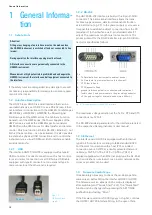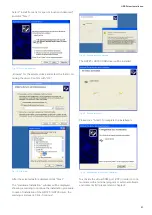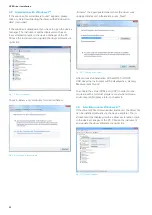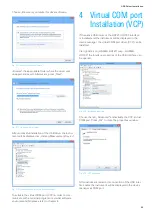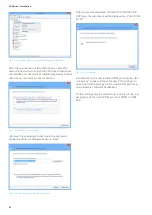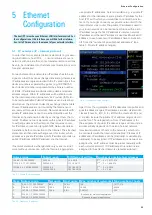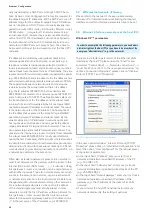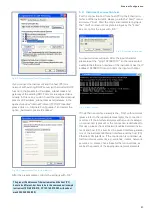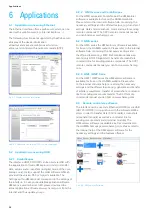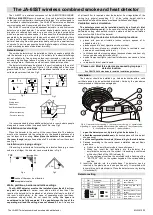
25
Ethernet Configuration
5 Ethernet
Configuration
5.1 IP networks (IP – Internet protocol)
In order that two or several network elements (e.g. measu-
ring instruments, host/PC‘s, …) can communicate over a
network with one another, some fundamental connections
have to be considered, so that data communication is error
free and unimpaired.
For each element in a network an IP address has to be as-
signed, so that they can exchange data among themselves.
IP addresses are represented (with the IP version 4) as four
decimal numbers separated by points (e.g. 192.168.15.1).
Each decimal number is represented by a binary number
of 8 bits. IP addresses are divided into public and private
address ranges. Public IP addresses will be able to route
by the Internet and an Internet service Provider (ISP) can
to be made available. Public IP addresses can be reached
directly over the Internet to directly exchange internet data.
Private IP addresses are not routed by the Internet and
are reserved for private networks. Network elements with
private IP addresses cannot be reached directly over the
Internet so no data can be directly exchanged over the In-
ternet. To allow network elements with a private IP address
to exchange data over the Internet, they require a router
for IP address conversion (English NAT; Network address
translation), before connection to the Internet. The attached
elements can then data exchange over this router, which
possesses a private IP address (LAN IP address) and also a
public IP address (WAN IP address), via the Internet.
If network elements exchange data only over a local net-
work (without connection with the Internet), appropriate
The host (PC) must have an Ethernet LAN interface inserted. For
the configuration of this interface you will find further informa
-
tion in its PC manual or in the manual of your network interface.
use private IP addresses. Select in addition e.g. a private IP
address for the instrument and a private IP address for the
host (PC), with which you would like to control the instru-
ment. If you might connect your private network with the
Internet later via a router, the private IP addresses used in
your local network can be maintained. Since within each
IP address range the first IP address is used as network
IP address and the last IP address is used as Broadcast IP
address, in each case two IP addresses have to be taken
off from the “number of possible host addresses“ (see
table 1: Private IP address ranges).
Apart from the organization of IP addresses into public and
private address ranges, IP addresses are also divided into
classes (Class: A, B, C, D, E). Within the classes A, B, and
C are also include the private IP of address ranges descri-
bed before. The categorisation from IP addresses is for
the assignment of public IP address ranges of importance
and essentially depends on the size of a local network
(maximum number of hosts in the network), which is to
be connected with the Internet (see table 2: Classes of IP
addresses). IP addresses can fix (statically) or variable (dy
-
namically) to be assigned. If IP addresses in a network are
assigned fix, an IP address must be preset manually with
each network element. If IP addresses in a network are
assigned to the attached network elements automati
Fig. 5.1: Ethernet settings example
Class
Adress range
Net quota
Host quota Max. number of networks Max. number of hosts
A
0.0.0.1 - 127.255.255.255
8 Bit
24 Bit
126
16.777.214
B
128.0.0.1 - 191.255.255.255
16 Bit
16 Bit
16.384
65.534
C
192.0.0.1 - 223.255.255.255
24 Bit
8 Bit
2.097.151
254
D
224.0.0.1 - 239.255.255.255
Reserved for multicast applications
E
240.0.0.1 - 255.255.255.255
Reserved for special applications
Tab. 5.2: Classes of IP adresses
Adress range
Subnet mask
CIDR way of writing
Number of possible host adresses
10.0.0.0 –10.255.255.255
255.0.0.0
10.0.0.0/8
2
24
− 2 = 16.777.214
172.16.0.0 –172.31.255.255
255.240.0.0
172.16.0.0/12
2
20
− 2 = 1.048.574
192.168.0.0 –192.168.255.255
255.255.0.0
255.255.255.0
192.168.0.0/16
192.168.0.0/24
2
16
− 2 = 65.534
2
8
− 2 = 254
Tab. 5.1: Private IP adress ranges








